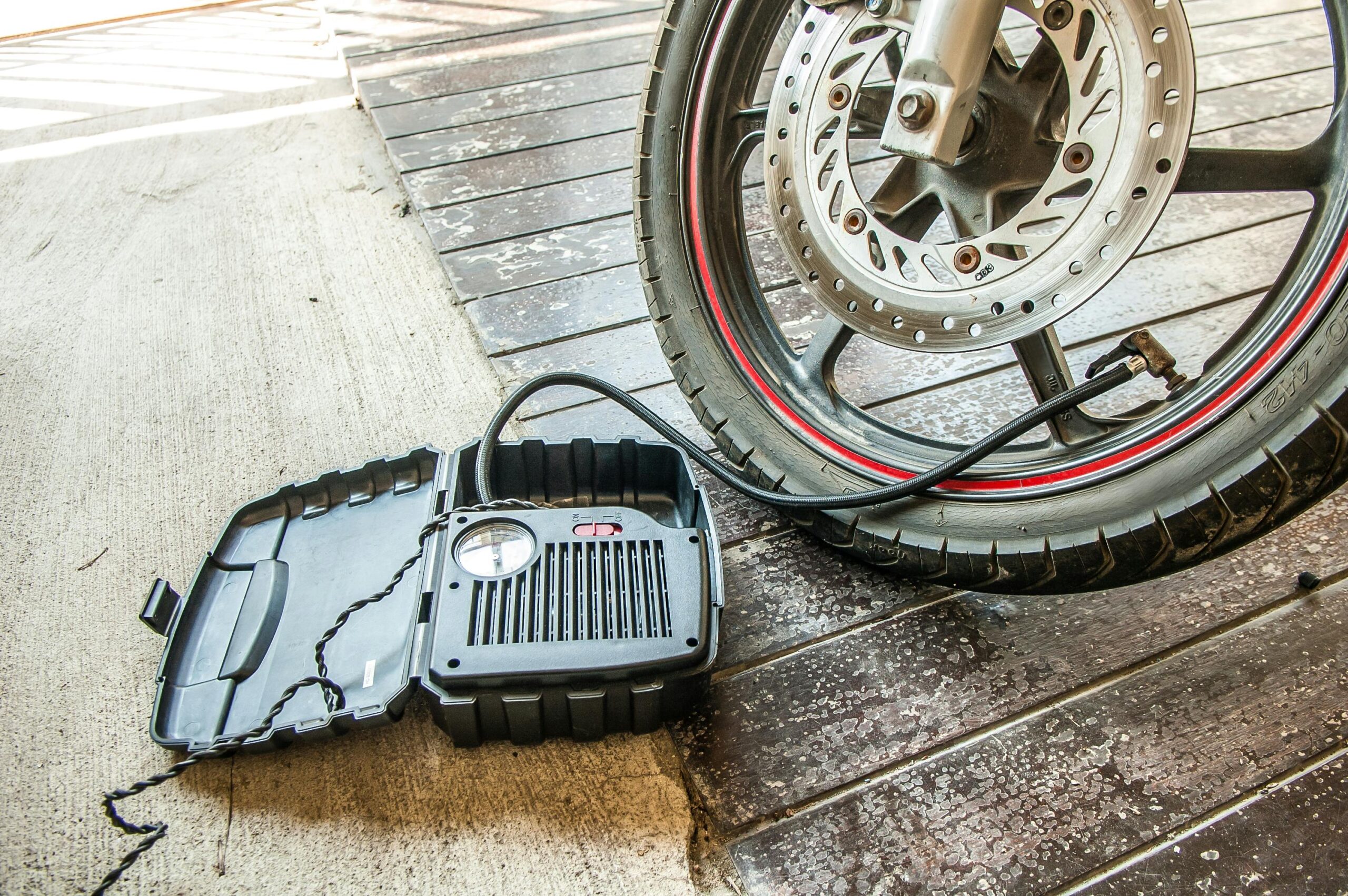When the sweltering heat of summer arrives, the last thing you want is for your auto air conditioner to fail. Have you ever wondered what causes your car AC to blow warm air? Or perhaps you’ve noticed strange noises when you turn it on? Understanding the intricacies of auto air conditioner repair can save you from costly repairs and ensure a comfortable ride. Many drivers overlook the importance of regular AC maintenance, leading to unexpected breakdowns and frustration. What if we told you that a simple check-up could extend the life of your system? With the right knowledge, you can tackle common issues like refrigerant leaks or faulty compressors with confidence. In this guide, we’ll uncover the most prevalent problems that plague vehicle air conditioning systems and provide insights on how to address them effectively. By the end, you’ll be equipped with essential tips and tricks to keep your car air conditioning system running smoothly. So, are you ready to dive into the world of AC repair and discover how to keep your vehicle cool all summer long? Let’s get started on your journey towards a refreshed and comfortable driving experience!
5 Essential Signs Your Car’s AC Needs Immediate Repair: Don’t Sweat This Summer!
So, you’re driving on a hot summer day and your auto air conditioner repair light pops on. Great! Just what you needed, right? Maybe it’s just me, but I feel like car air conditioning systems are one of those things that should just work. But, nah. They decide to act up when you need it the most. Let’s get into the nitty-gritty of fixing that little problem, shall we?
First off, you might wanna check the obvious stuff, like the fuses. If your AC just stops blowing cold air, it could be as simple as a blown fuse. You know, the little thing that keeps your car electronics happy? You can find the fuse box under the dashboard or in the engine compartment. Just look for a diagram. Not gonna lie, they can be a bit confusing, but hey, you didn’t come here for a walk in the park, right?
Here’s a quick table to help you identify common fuse issues:
| Fuse Type | Symptoms of Failure |
|---|---|
| AC Compressor Fuse | AC not turning on at all |
| Blower Motor Fuse | Weak airflow or no airflow at all |
| Relay Fuse | AC blowing warm air |
Next up, maybe check the refrigerant levels. I mean, if there’s no refrigerant, there’s no cold air. It’s kinda how physics works, I guess? You can buy a refrigerant refill kit at your local auto store, and it’s not rocket science, folks. Just follow the instructions, but don’t forget to wear gloves. That stuff can be nasty.
Now, if you’re like me and not really sure what to do, you might wanna look into what kind of refrigerant your car uses. Most cars use R-134A, but some new models might use R-1234yf. Just Google your car model, and you should find the info. But, seriously, who has time for that?
Then there’s the compressor. Oh boy, the compressor. If that thing’s shot, you might as well toss a coin to decide whether to fix it or just buy a new car. They can be pretty pricey to replace. You’ll know it’s the compressor if you hear weird noises when you turn on the AC, or if it’s cycling on and off like it’s got a personality disorder.
Here’s a little checklist for diagnosing that pesky compressor:
- Is it making weird noises?
- Does the AC blow hot air even when it’s on?
- Is there any visible damage or leaks?
If you’re noticing even one of those, it’s time to take a closer look, or just call a pro. Not everyone’s cut out for AC repairs, and that’s totally okay.
Let’s not forget about the cabin air filter. Not really sure why this matters, but if it’s clogged, it can restrict airflow and make the AC not work as effectively. You might feel like you’re suffocating in your own car, and who wants that? Check your owner’s manual for how to change it. It’s usually a piece of cake, unless you’re me, then it’s like a Rubik’s cube.
Here’s a quick list for cabin air filter replacement:
- Locate the filter compartment.
- Open it up, usually involves some tabs or screws.
- Remove the old filter.
- Insert the new filter, making sure it’s in the right direction.
- Close everything back up.
And voila! You might just feel like a car wizard.
If you’re still having issues, you could have a leak in the AC system. These can be sneaky little devils. You might need a professional to do a dye test or use a vacuum pump to find out where it’s leaking from. I know, sounds like a lot of work.
Lastly, let’s talk about the condenser. This part is located at the front of your car, and if it’s dirty or blocked, your AC could be struggling to keep up. A quick rinse with a hose can sometimes do wonders. Just don’t spray it like you’re putting out a house fire, okay? Gentle is the key!
In summary, while auto air conditioner repair can seem like a daunting task, it doesn’t have to be. Just remember to check fuses, refrigerant levels, and don’t forget that pesky cabin air filter. If all else fails, don’t be shy about calling a mechanic. Sometimes, it’s better to let the pros handle it, especially if you’d rather not end up with a car that feels like a sauna.
How to Diagnose Common Auto Air Conditioner Problems: A Step-by-Step Guide
So, you’re sweating bullets in your car, right? And your auto air conditioner is on the fritz? Well, let’s dive into the wonderful world of auto air conditioner repair. Spoiler alert: it’s not just about filling up the refrigerant or whatever, there’s actually a bit more to it. I mean, who knew?
First off, let’s talk about the basics. Your car’s AC works on a pretty simple principle—compressing and expanding refrigerant. It cools the air, right? But if it’s blowing hot air, it’s time to investigate. Like, seriously. Maybe it’s just me, but I feel like people ignore the signs until they’re roasting inside like a turkey.
Here’s a quick checklist of what to look for:
- Strange Noises: If your AC sounds like it’s auditioning for a horror movie, that’s a big red flag.
- Weak Airflow: If you’re barely getting a breeze, it’s not gonna cut it.
- Bad Odors: Smelling like a wet dog? Gross.
- Visible Leaks: You could actually see liquid under the car? Yeah, you might want to get that checked.
Now, you might be wondering about the costs associated with auto air conditioner repair. Let’s break it down like a cheap piñata:
| Service Needed | Average Cost |
|---|---|
| Refrigerant Recharge | $100 – $200 |
| Compressor Replacement | $600 – $1,200 |
| AC Condenser Replacement | $500 – $1,000 |
| Blower Motor Replacement | $300 – $600 |
So, if you’re looking at a full-on breakdown, it can get pricey real quick. Not really sure why this matters, but it’s always good to have a ballpark figure in your head before you drive into the repair shop.
Now, if you decide to take the DIY route, buckle up, folks. Here are some steps for a basic auto air conditioner repair. Keep in mind, I’m not a mechanic, but this might help you save some bucks.
- Check the Fuses: Sometimes it’s just a blown fuse. Easy fix, right?
- Inspect the Cabin Air Filter: If it’s clogged, it’s just gonna choke your AC. Change it.
- Look for Refrigerant Leaks: You could use a UV dye to find leaks, or just eyeball it.
- Replace the Compressor: This one’s tricky and maybe not for the faint of heart.
- Evacuate and Recharge the System: You’ll need a vacuum pump and refrigerant to do this part.
I mean, I get it; it sounds like a lot. But hey, maybe you’ll surprise yourself. Or not. Who knows?
Also, a quick tip: always wear gloves when you’re messing with refrigerants, because they’re not exactly safe. You don’t wanna end up like one of those cautionary tales. Just saying.
Now, while we’re on the subject, let’s talk about some common myths surrounding auto air conditioner repair. It’s always good to debunk these, right?
- Myth 1: “I don’t need to service my AC until it breaks.” Nope. Regular maintenance is key to keeping it running smoothly.
- Myth 2: “Using the AC will lower my fuel efficiency.” Well, kinda. But driving with the windows down can actually create drag, so it’s a toss-up.
- Myth 3: “Only professionals can fix AC issues.” Not necessarily true, but tread carefully, my friend.
If you’re gonna tackle this yourself, it might be helpful to have some tools handy. Here’s a quick list:
- Wrenches and sockets
- Screwdrivers (flat and Phillips)
- A vacuum pump
- Refrigerant gauge set
- UV dye (for finding leaks)
And don’t forget the trusty owner’s manual for your car. It’s like your personal guide to the universe of your vehicle.
Okay, let’s recap. Your auto air conditioner repair can be a DIY project if you’re feeling brave. But do your research, stay safe, and maybe have a backup plan in case things go south. Also, if you’re not feeling it, you might as well let a pro handle it. Life’s too short to sweat the small stuff, especially inside your car!
In the end, whether you’re getting your hands dirty or handing it off to the experts, knowing a bit about how your car’s AC works can empower you. Or at least give you something to
Top 7 DIY Auto Air Conditioning Repair Tips: Save Money and Stay Cool
When summer rolls around, and the heat becomes unbearable, you might discover that your car’s air conditioner is blowing hot air instead of the refreshing chill you expect. Not really sure why this matters, but it can sure ruin a road trip, right? Auto air conditioner repair is something many folks dread, but it doesn’t have to be rocket science. So, let’s dive into this and see what we can figure out!
First off, let’s talk about the signs that your AC needs some TLC. If you notice weird noises or it takes longer than usual for the car to cool down, it might be time to consider auto air conditioner repair. You might also notice a strange smell—like something died in there. Gross, right? But hey, these are just clear indicators that your AC system is not working the way it should.
Now, before you run off to the mechanic, you should probably check a few things yourself. A lot of people overlook the basics. It’s like forgetting to check if your phone is charged before heading out. Here’s a handy checklist:
| Checklist Item | What to Do |
|---|---|
| Check the Fuses | Look for blown fuses in the fuse box. |
| Inspect the Cabin Filter | A dirty filter can restrict airflow. |
| Look for Leaks | Any signs of refrigerant leaking? |
| Check the Compressor | Is it turning on and off? |
Maybe it’s just me, but I feel like checking the fuses is like, the most underrated step in auto air conditioner repair. If you don’t know what a fuse is, it’s that little thingy that protects the electrical circuits in your car. If it’s blown, well, that could be your problem right there.
And if your AC’s blowing hot air like a hairdryer, it could be low refrigerant levels. This is where things start to get more complicated, but hang tight! If you suspect low refrigerant, you can buy a recharge kit. Just be careful, alright? Follow the instructions, or you could end up making it worse. Not that I’m saying you would, but who knows, right?
Okay, so let’s say you’ve done all the checks and nothing seems outta whack. It might be time to take it up a notch. Here’s where you might need a bit of help. You could take your car to a professional for a proper inspection. They usually have all sorts of gadgets to diagnose the problem. They might find something simple that you missed, like a faulty switch or a bad relay.
If it turns out you are looking at a more serious issue, like a malfunctioning compressor, brace yourself for some expenses. Compressors aren’t exactly cheap, and it’s a pretty big part of the AC system. A new one could set you back a few hundred bucks, depending on the make and model of your car. Also, don’t forget about the labor costs. Mechanics charge by the hour, and sometimes it feels like they’re charging by the minute!
One thing to keep in mind is that regular maintenance can help prevent major auto air conditioner repair work down the line. It’s like getting your teeth cleaned at the dentist instead of waiting until you have a cavity—way less painful and way less expensive! So, make sure to get your AC system checked regularly.
Here’s a quick list of things you can do to keep your AC in tip-top shape:
- Run your AC regularly, even in winter, to keep the system lubricated.
- Keep the cabin filter clean.
- Use the recirculate mode to improve efficiency.
- Park in the shade or use a sunshade to reduce heat buildup.
And if you’re wondering, “What if I just ignore it?” Well, let’s just say that might not be the best idea. Ignoring AC issues can lead to bigger problems, and then you’ll be facing a hefty bill. It’s like ignoring that annoying check engine light until your car starts making weird noises. Spoiler alert: it never ends well.
If you do find yourself in a bind and need auto air conditioner repair, don’t be afraid to shop around for quotes. Mechanics can differ in price quite a bit, and you might find a better deal just a few miles away. Always ask what’s included in the price, too! Some places might quote low but hit you with hidden fees later.
In the end, whether you’re a DIY enthusiast or prefer to leave it to the pros, knowing the basics of auto air conditioner repair can save you time, money, and a whole lot of frustration. Just remember, your car’s AC isn’t just a luxury; it’s a necessity unless you enjoy sweating buckets while stuck in traffic. So, get on top of that repair before you end up regretting it!
The Ultimate Checklist for Auto Air Conditioner Maintenance: Ensure Year-Round Comfort
So, it’s summer, and your car’s air conditioner is blowing hot air. Like, come on! Who needs a sauna on wheels? Not me for sure. But hey, don’t sweat it (pun intended). Let’s chat about auto air conditioner repair, shall we?
First of all, you might be thinking, “Is it really that big of a deal?” Well, maybe it’s just me, but driving in a hot car feels like torture. So, here’s the lowdown on what could be going wrong.
Common Issues with Auto Air Conditioners
Low Refrigerant: This is a biggie. If your A/C ain’t blowing cold air, it could be because there’s not enough refrigerant. It’s like trying to make a smoothie without any fruit, right? Not gonna happen!
Compressor Problems: The compressor is the heart of the A/C system. If it’s not working, well, you’re basically driving a toaster.
Clogged Filters: Air filters can get clogged with dust and debris. Think of it like trying to breathe through a straw that’s got a bunch of gunk in it. Gross, right?
Electrical Issues: Sometimes, it’s all about the wires. If the electrical system is misbehaving, your A/C could just be playing hard to get.
Leaks in the System: If there’s a leak, your refrigerant will just escape like it’s got a party to attend. And no one wants that.
Signs Your A/C Needs Repair
Weak Airflow: If the air coming out of the vents is weak, it’s time to investigate. Maybe you’re just not getting enough love from your A/C unit.
Unusual Noises: If your A/C sounds like a cat fight when you turn it on, that’s a red flag. Like, “Hello, I need some attention here!”
Bad Odors: Smells like something died in there? Yikes! This could mean mold or mildew is part of the party. Not invited!
Frequent Cycling: If your A/C keeps turning on and off like it’s indecisive, that’s not normal. It’s like a confused puppy trying to decide if it wants a walk or a nap.
DIY Auto Air Conditioner Repair Tips
Okay, if you’re feeling brave and wanna try fixing it yourself, here’s a quick rundown:
Check the Refrigerant Level: You can buy a kit to check this at your local auto parts store. Just follow the instructions, and don’t mix up the hoses. That would be a disaster!
Replace the Cabin Air Filter: This is usually a quick fix. Just pop it out and put a new one in. Easy peasy, right?
Inspect the A/C Belts: Look for cracks or wear. If they’re looking rough, it might be time to replace them. I mean, you wouldn’t wanna drive on a flat tire, would ya?
When to Call a Professional
Now, if you’ve tried these things and still feel like you’re in a sauna on wheels, it might be time to call in the pros. Here’s when to do it:
If you suspect a refrigerant leak. Seriously, don’t mess with refrigerants unless you know what you’re doing. It’s not just a hobby; it can get dangerous.
If the compressor is shot. Replacing it ain’t for the faint of heart—or wallet.
If you can’t find the problem. Sometimes it’s just best to admit defeat and call someone who knows their stuff. Honestly, who has time to spend hours on YouTube?
Cost of Auto Air Conditioner Repair
So, what’s this gonna cost ya? Here’s a rough breakdown:
| Service | Estimated Cost |
|---|---|
| Refrigerant recharge | $100 – $300 |
| Compressor replacement | $500 – $1,500 |
| Cabin air filter replacement | $20 – $50 |
| Electrical system diagnostics | $75 – $150 per hour |
Not really sure why this matters, but knowing the costs can help you budget. You don’t wanna be left in the heat with an empty wallet, right?
Final Thoughts
Whether you’re a DIYer or you’d rather let a pro handle it, understand that the auto air conditioner repair process doesn’t have to be terrifying. Just take it one step at a time. And honestly, if all else fails, just roll down the windows and enjoy the breeze. Or blast the music and pretend you’re at a concert. Who cares, right?
Why Regular Auto AC Servicing is Key to Your Vehicle’s Longevity: Discover the Benefits
When summer rolls around, and you find your car’s air conditioner blowing hot air, it can be a bit of a nightmare, right? Like seriously, who wants to sweat it out in their own ride? So, let’s dive right into the world of auto air conditioner repair. This isn’t just a luxury; it’s a necessity. If you’re anything like me, you may have thought, “Hey, I can fix this myself!” Well, maybe you can, or maybe you can’t. But let’s break it down anyway.
First things first, it’s always a good idea too know the basics of how your car’s air conditioning system works. Most people think it’s just a magic box that makes cold air, but it’s actually a whole system with parts like the compressor, condenser, evaporator, and expansion valve. Each of these pieces needs to work together like a well-rehearsed band, or else you’re in trouble. Not really sure why this matters, but understanding how they works gives you a leg up when things go south.
Now, let’s talk about the warning signs that your auto air conditioner repair is overdue. If you’re getting weak airflow, strange noises, or even worse, a bad smell—it’s like your car’s way of saying “Help me!” Here’s a nifty little checklist you can use:
| Warning Sign | Possible Issue |
|---|---|
| Weak Airflow | Clogged filter or low refrigerant |
| Strange Noises | Failing compressor or loose parts |
| Bad Smell | Moldy evaporator or dirty filters |
| Ice Buildup | Low refrigerant or airflow issues |
Okay, so you’ve noticed some of these symptoms. What now? Well, before you jump into auto air conditioner repair, it could be smart to check the easy stuff first. Like, is your cabin air filter dirty? Sometimes, it’s just a matter of swapping out a filter, and boom! You’re back in business. But if that doesn’t work, maybe it’s just me, but I feel like it might be time to get a little deeper into the rabbit hole.
Next up is the refrigerant. This is the stuff that cools the air. If you’re low on refrigerant, your AC won’t work properly. You can buy a can of refrigerant at your local auto parts store, but be careful. Seriously, don’t go overboard with it. Too much refrigerant can cause more problems than it solves. It’s like trying to fix a leaky faucet with a hammer – doesn’t really work.
Here’s a quick rundown of the steps to take when you’re looking to do some auto air conditioner repair:
- Identify the Problem: Use that checklist I mentioned earlier.
- Check the Fuses: Sometimes it’s just a blown fuse. Easy peasy fix.
- Inspect the Compressor: Look for leaks or damage. If it’s not spinning, you’ve got a problem.
- Recharge the System: If it’s low on refrigerant, follow the instructions on your can.
- Check for Leaks: You can use soap and water to find the leaks. Bubbles mean bad news.
Now, if you’ve done all this and your AC still isn’t working, you may be facing a bigger issue. At this point, you could either throw in the towel and head to a professional, or you could keep trying to fix it yourself. If you choose the latter, just know it could get messy. I mean, who wants to pull apart their car’s interior? Not me for sure!
So, let’s say you’ve decided to go for it. You might wanna invest in some tools: a multimeter for testing electrical connections, a vacuum pump, and some gauges for the refrigerant. Prices vary, but it’s good to keep in mind that DIY auto repairs can save some bucks, unless you accidentally cause more damage. Then you’re really in a pickle, huh?
If you’re feeling brave enough to tackle the compressor, remember this is a complex job. You’ll need to remove a lot of components just to access it. I’m talking about belts, brackets, and who knows what else. Good luck with that!
And for those of you who just can’t bear the thought of getting your hands dirty, you can always take your car to a mechanic. They’ll have the right tools and experience to get your AC running like new. But, be prepared to open your wallet wide because professional auto air conditioner repair doesn’t come cheap.
In the end, whether you’re a DIY guru or more of a “call the pros” type, understanding the ins and outs of your auto air conditioning system can help you make better decisions. It’s all about keeping your
Conclusion
In conclusion, understanding the key components and common issues related to auto air conditioner repair can significantly enhance your vehicle’s comfort and performance. From identifying signs of a failing AC system, such as inadequate cooling or unusual noises, to recognizing the importance of regular maintenance and timely professional inspections, being proactive can save you time and money in the long run. Remember, addressing minor issues early can prevent costly repairs down the line. Whether it’s recharging refrigerant levels, replacing a faulty compressor, or fixing leaks, proper care ensures your AC operates efficiently. Don’t wait until the heat of summer hits; take action now to ensure your vehicle remains cool and comfortable. If you suspect your auto air conditioner needs attention, consult a qualified technician today to keep your ride enjoyable and stress-free.








